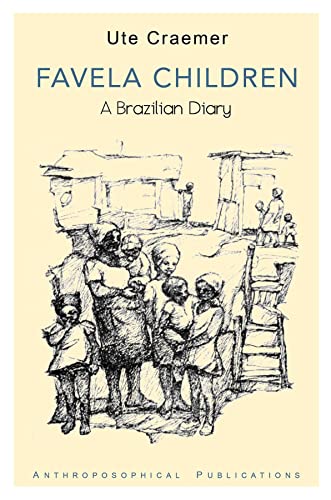Translator's Introduction
During the summer of 1979, I visited the large Waldorf School in Sao Paulo, Brazil. Previously a friend had told me that one of the teachers there intended to open a school in a favela (slum). I asked if I could speak with that teacher, Ute Craemer. Although she still taught in the Sao Paulo Waldorf School, her heart was in the "escolinha" (little school) situated about seven miles away in a favela inappropriately named Monte Azul (blue hill). The favela was not on a hill, but in a muddy depression; it wasn't blue either, but gray-brown. But names are mysterious things and somehow it fits in this case, at least now. And the school wasn't a school in the proper sense either. The escolinha was a barrack-like house on a small piece of land above the favela. It was divided into rooms where various activities took place: dance, painting, theater, cooking, sewing. There was also a carpentry, a kindergarten and a play room. The children, between three and sixteen years of age, attended the escolinha before or after their official school hours. They were the poorest of the poor and naturally could not pay for the lessons they received.
"How do you finance all this?" I asked Ute.
She laughed: "Yes, that's a problem." She told me how at first she taught the children in her own home, a few blocks from the favela, and that someone in Germany heard of her work and donated ten-thousand German marks, with which she built the escolinha and bought materials.
Since that time the work has greatly expanded and has even spread to other favelas. It is all financed by donations from individuals, business firms, charities and a subsidy from the city of Sao Paulo. Nevertheless, "Yes, that's a problem" is more true now than ever, for expansion creates new costs and world-wide recessions affect non-profit making institutions just as much, if not more, than profit making ones.
That visit and subsequent ones partially answered a question which had long occupied me: How can the educational and social impulses which Rudolf Steiner introduced to the world be expanded to include the poor?
Many years ago I was involved in the founding of a Waldorf School in Argentina. The first years were financially very difficult, which is practically a normal situation. But the school developed and is now a well established institution for middle and upper-middle class children. The number of poorer children who can be accepted is limited by economic realities and the understandable reluctance of the poor to send their children to schools dominated by another social class.
For two reasons this seemed to be a tragically unavoidable contradiction, for the Waldorf educational method as practiced the world over was not meant only for the well-to-do, but also for the under-privileged. One could even say especially for the latter, for these schools emphasize the human aspect of education, the intensive artistic character of the teaching process, the religious, non-denominational atmosphere, the dedication of the teachers and more, all of which the weak need more than the strong. The second reason is ironical rather than contradictory: The first Waldorf School, founded in Germany in 1919, was for the children of the workers in a cigarette factory. Its subsequent development has been very different however. As soon as the founder's financial support was no longer available, it was transformed into a school for those who could pay. My experience in many countries has shown that this situation is universal, even in those (European) countries which are partially subsidized by the State.
The "escolinha" in Sao Paulo was the first educational institution which applies the Waldorf method based on anthroposophical spiritual science to concentrate on serving the poor, the forgotten, the degraded, and under extremely difficult conditions.
The Children of the favela is a translation of Ute Craemer's book Favela Kinder, which first appeared in German in 1981 and went through several editions, and parts of her second, later book, entitled Favela Monte Azul. It is neither theoretical nor ideological, but is a true story from her diary, written as the events were occurring. But it is more than these things. It is a kind of modern mystery drama about the opposing forces of good and evil. During the Saint Michael's Day celebration in the Waldorf Schools (described in the book), the children lay their crystals on the scales of the good and, with the help of the archangel, that side always wins. In today's world, however, outside the Waldorf School, the scales seem to be tipping the other way. This book, then, is the story of a small group of people who are fighting against the dragon of ignorance, egoism and social indifference in an effort to give more weight to the scale of the good.
Frank Thomas Smith
